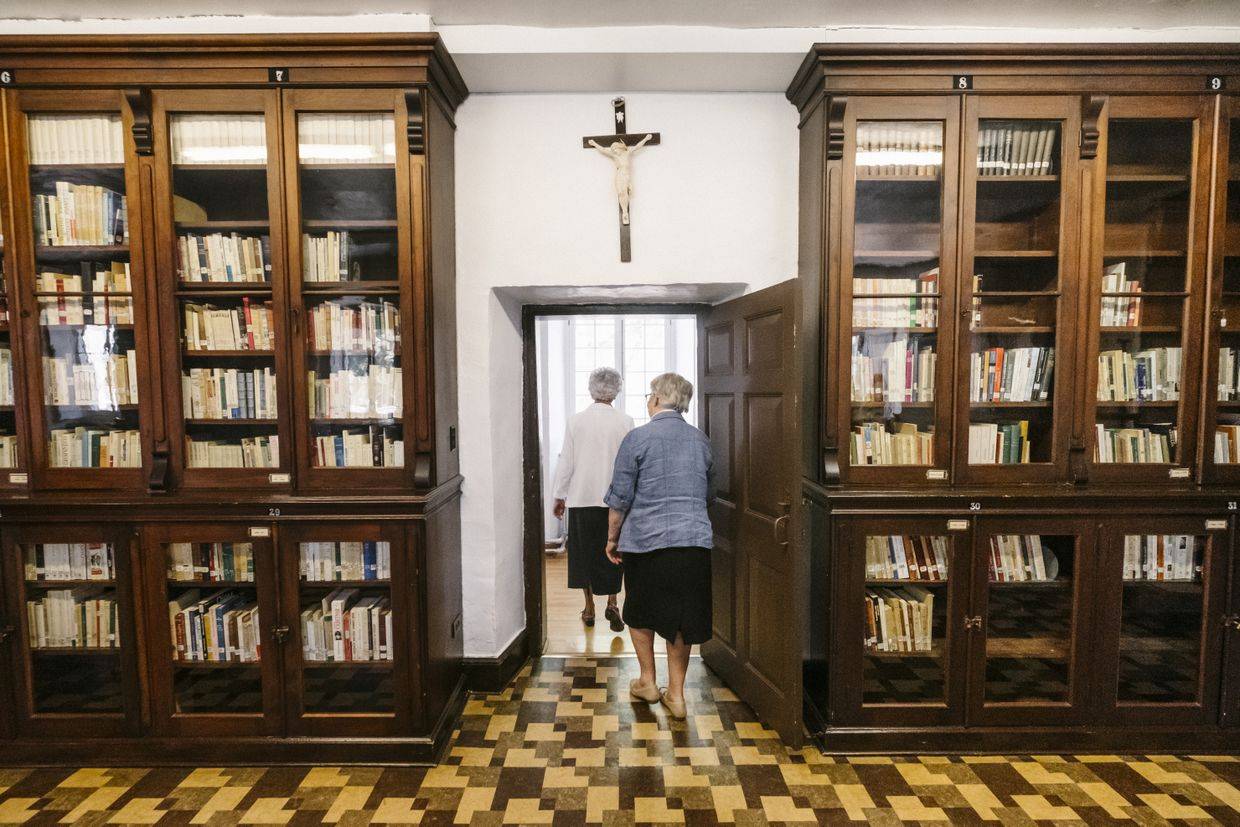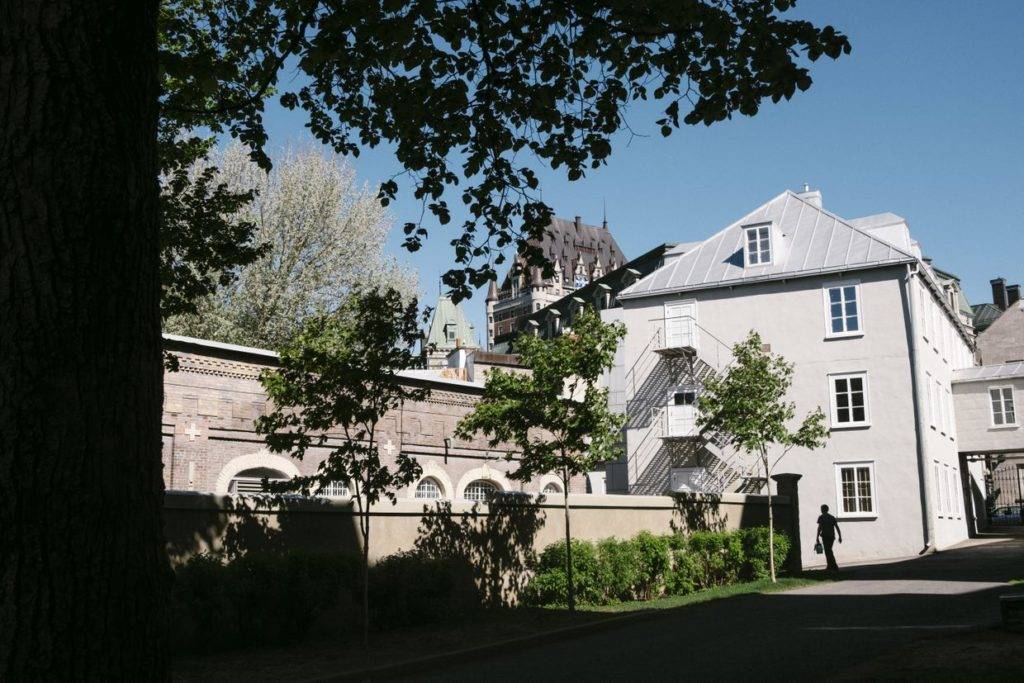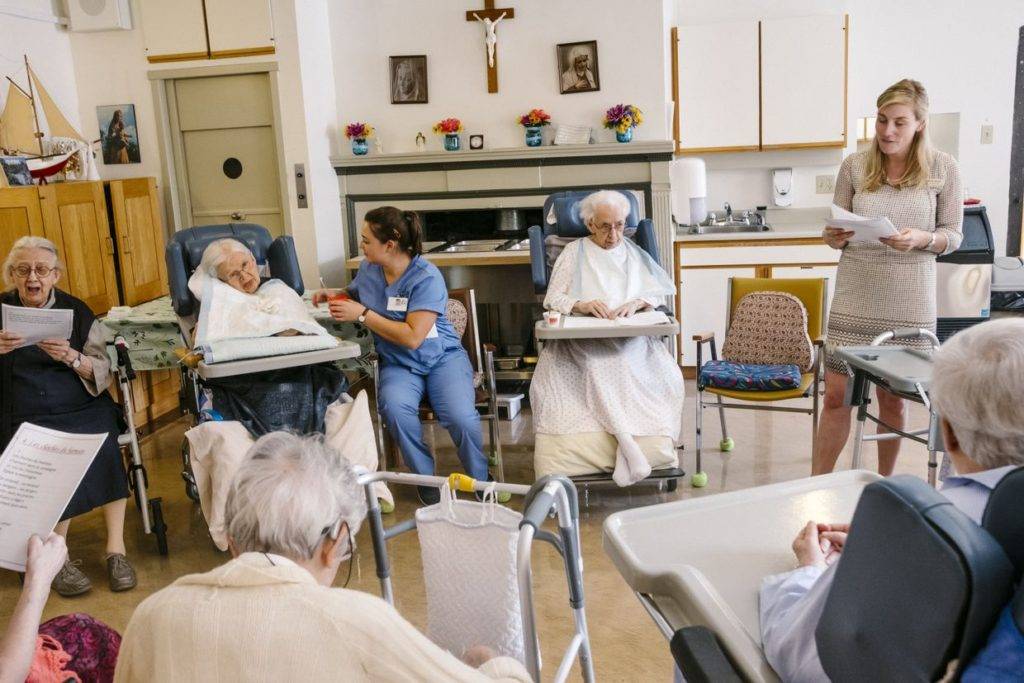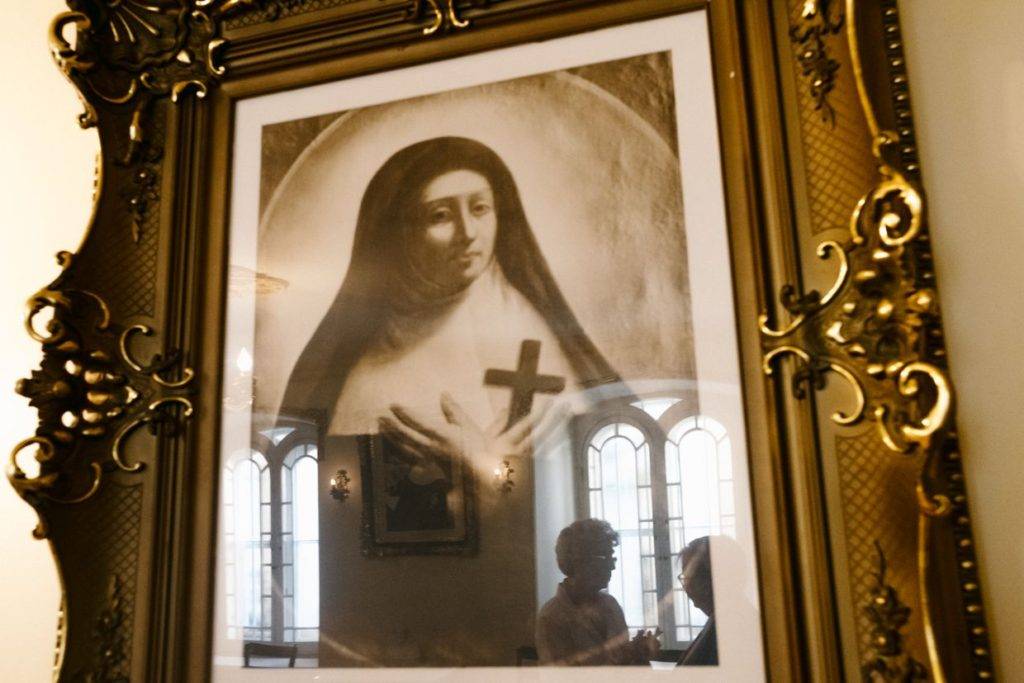Quebec’s dwindling number of Catholic nuns spells end of era in province
From a height of about 47,000 Catholic nuns in Quebec in 1961, fewer than 6,000 remain. The Ursulines Catholic nuns are leaving their historic monastery in Quebec city and moving to an assisted-living residence.
She entered the front door a young girl and exits a woman with grey hair and a heavy heart. Andrée Leclerc knows every step of the Ursuline Monastery in Quebec City, its creaking floors and its flowering trees, and the prayers recited by the once-cloistered nuns.
She first set foot in the monastery as a boarder at 14. She took her vows at 20. Now 86, Sister Andrée is saying goodbye to a place she knows so intimately that “the walls cling to my skin.” She and the other aging nuns at the monastery, a grand monument to Quebec history reaching back 400 years, are moving to an assisted-living residence.
“We know we are going off there to die,” Sister Andrée says in a sunlit common room. “This was my home, where I lived, I slept and I prayed. My whole life is here.”
The Ursulines’ move tells the story of the dramatic decline of the formerly powerful Catholic Church in Quebec. The nuns who once ran an empire of provincial schools and hospitals are vanishing. From a height of about 47,000 Catholic nuns in Quebec in 1961, fewer than 6,000 remain, most of them in their 80s.
They are slipping away quietly and precipitously, their obituaries reading like the fading pages of a bygone time. Sister Fernande Bolduc, 96. Sister Rolande Landry, 96. Sister Marie-Ange Gagnon, 97. Sister Thérèse Tardif, 97. Sister Georgette Rioux, 99. Sister Bernadette Richer, 100.

“This was my home, where I lived, I slept and I prayed. My whole life is here, ‘says 86-year-old Sister Andrée Leclerc, who first set foot in the monastery as a boarder at 14.
Those are six of the more than 15 Roman Catholic nuns who died in Quebec in the month of May alone. The six women, between them, devoted 452 years to religious life.
Their passing unfolds amid indifference in a province that is 76-per-cent Roman Catholic but largely non-practising. More than any other province, Quebec actively debates the place of religion and religious minorities in its assertively secular society. Today the state operates the institutions once in the hands of nuns.
With little new blood, Catholic religious orders are shrinking. The last novice joined the Ursulines in the mid-1990s. Only 215 nuns remain in the order across Quebec today, down from more than 900 in the mid-sixties.
“People sometimes ask why we’re moving,” says Sister Pauline Duchesne, superior of the Ursuline Monastery in Quebec City, who at 76 is its second-youngest nun. “I tell them it’s because we’re not young. We don’t know what God has in store for us. But for now, we have this passage to make.”
It is hard not to find poignancy in the departure of nearly 50 elderly sisters from a home that has been in continuous service since the mid-1600s. To walk through its sparse hallways between thick stone walls is to feel the looming presence of the past. Several religious orders are abandoning heritage properties across Quebec, but none matches the sheer historical sweep of the Ursuline Monastery in the heart of Old Quebec.
The sisters who founded it were the first nuns to set foot in the New World. Three Ursulines led by Marie de l’Incarnation made the transatlantic voyage from France in 1639, surviving disease, storms, pirates and a close brush with an iceberg.
They set up a school that has become the oldest institution of learning for girls in North America. Centuries on, the École des Ursulines’s interior courtyard still rings out with the shouts of uniformed schoolgirls (boys were admitted in 2010 and a secular board took over four years later, a nod to changing times).
The nuns’ imminent departure has left the mood inside the walls reflective. The sisters reminisce about the days until the mid-sixties when they wore their order’s flowing black habit and white yoke. Fashions don’t change much in this world: They’d worn the same outfit since 1639. Sister Andrée recalls how the habit was constraining and covered her ears. “Summertime was the worst. It was hot,” she says.
Sister Suzanne Pineau, who first began as a boarder at the Ursulines at age 8 and is now 82, recalls how the head-to-toe covering weighed heavily on her shoulders. When clothing rules were relaxed, the sisters could shop for their clothes like anyone else. Yet their loose blouses and long, flowing skirts marked them unmistakably as women of the church.
“When we’re out, everyone recognizes us as nuns,” Sister Suzanne says. “We don’t wear makeup or jewelry. We’re not in the latest fashions.”
Nowadays, religious veils are worn by others. Sister Suzanne teaches French to immigrants inside the monastery, and some women come wearing the Muslim veil. “Why are we stigmatizing them?” she asks. “We wore [veils] for 300 years. Nobody said anything.”
Yes, there were tumultuous years in Quebec, when the province seemed to overnight abandon its church pews. Yet nuns such as Sister Suzanne stayed faithful, even through challenging times. “There are difficulties in all walks of life,” she says. “I committed myself to the Lord, like others commit themselves to a marriage or to working for a company.”
Upstairs in the infirmary, the nuns who survived Quebec’s rapid shift to secularism seem like historical artifacts themselves. The hallways are filled with women whose hair comes in shades of grey, silver and white, moving like wispy shadows on walkers and in wheelchairs. After years of caring for others, they need someone to care for them. Their average age is 87.
They enter a modern facility this fall that they will share with another order of sisters forced to downsize, the Soeurs servantes du Saint-Coeur de Marie; the latters’ move involves not just the living, but the dead. The Soeurs servantes will exhume the bodies of 600 nuns from the cemetery adjoining their Quebec City monastery so that they can put the land up for sale. The nuns will be reburied elsewhere.
“You can’t sell a cemetery,” said Sister Gilberte Laflamme, an official with the order. “It’s a difficult moment for us, because our sisters have always been close by.”
Some time in September, the Ursuline nuns will walk out of their home one last time (52 sisters still live there, and four will remain behind to ensure some oversight; the order hopes to rent the space to a cultural or educational institution). They will say a final prayer inside the soaring chapel and its vaulted dome. They will head down the polished-floor hallways, past the circular grill in the wall that allowed cloistered nuns to speak to visitors without being seen.
Almost every nook and cranny on their way out holds a tangible piece of history. Behold here, behind a fireplace door, a set of cannonballs blasted by British General James Wolfe during the 1759 siege of Quebec. Behold, there, in a laundry room, the 18th-century military headquarters of British General James Murray. Here, in the upstairs community room, is where sisters knitted woolen leggings to keep Scottish soldiers warm under their kilts.
“I’ll miss the soul of this place,” Sister Andrée says. “The idea of living differently brings tears to my eyes. It’s physical. It’s psychological. My entire being is affected. When I was a teenager I left my family home in the Charlevoix. Leaving here is harder.”
When the last nuns pad out the door, it will not be easy to return. The massive wooden door to the Ursuline Monastery only has a doorknob on the inside. It was designed to keep outsiders from getting in. Ultimately, though, it could not keep out the realities of advancing age and a secular world.
By Renaud Philippe
Published on The Globe and Mail Website






